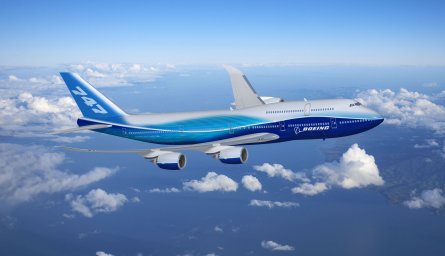By Guy Norris in Los Angeles
|
| 747-8l passengers could be looking through 787-style dimable windows |
Boeing says studies for the yet-to-be-ordered 747-8 Intercontinental include the possible use of dimmable electrochromic windows, now in development for the 787, in place of standard plastic shades. The company says the windows will be 16% larger than those of the current -400, thanks to a more efficient structural design derived from the 777.
“We’re able to go to a stringerless window belt, which we’re doing for weight purposes,” says 747 vice president and general manager Jeff Peace. The move to a dimmable window is “a trade study we’re still evaluating”, he adds.
The study comes as design work on the 747-8 family continues towards configuration freeze around September this year, with major assembly due to begin on the first -8F freighter version in the first quarter of 2008. The 747-8F is due to make its first flight at the end of 2008 and enter service in the third quarter of 2009 with launch customer Cargolux, while the passenger 747-8 Intercontinental is aimed at service-entry in mid-2010.
Peace says changes to the wing increase thickness “at the side of body and inboard wing. We increased the shape of the aerofoil there to make the inboard wing work harder, and it also gives us the best improvement in bending moment, so from a structural point of view it was efficient.”
The latest wing rendition, which was chosen at the end of April, also increases fuel capacity while maintaining the efficiency improvements of the larger design. Fuel consumption is expected to be around 2.6 litres (0.69USgal) per passenger per 100km (55nm) for the -8 versus 3.06 litres for the -400 assuming a 100% load factor and a 5,500km mission range. Fuel capacity for both passenger and freight models has grown by some 14,000 litres to 241,590 litres for the Intercontinental and 229,100 litres for the -8F.
Boeing is also embarking on the next round of windtunnel testing having completed work on high- and low-speed lines development and fine-tuning of the noise characteristics on the fully integrated airframe. High-speed testing will continue at the company’s transonic windtunnel in Seattle, and further low-speed and noise testing will be completed in the UK at the Qinetiq Low Speed Acoustic Facility at Farnborough. “This will continue through mid-summer,” adds Peace.
Source: Flight International




















